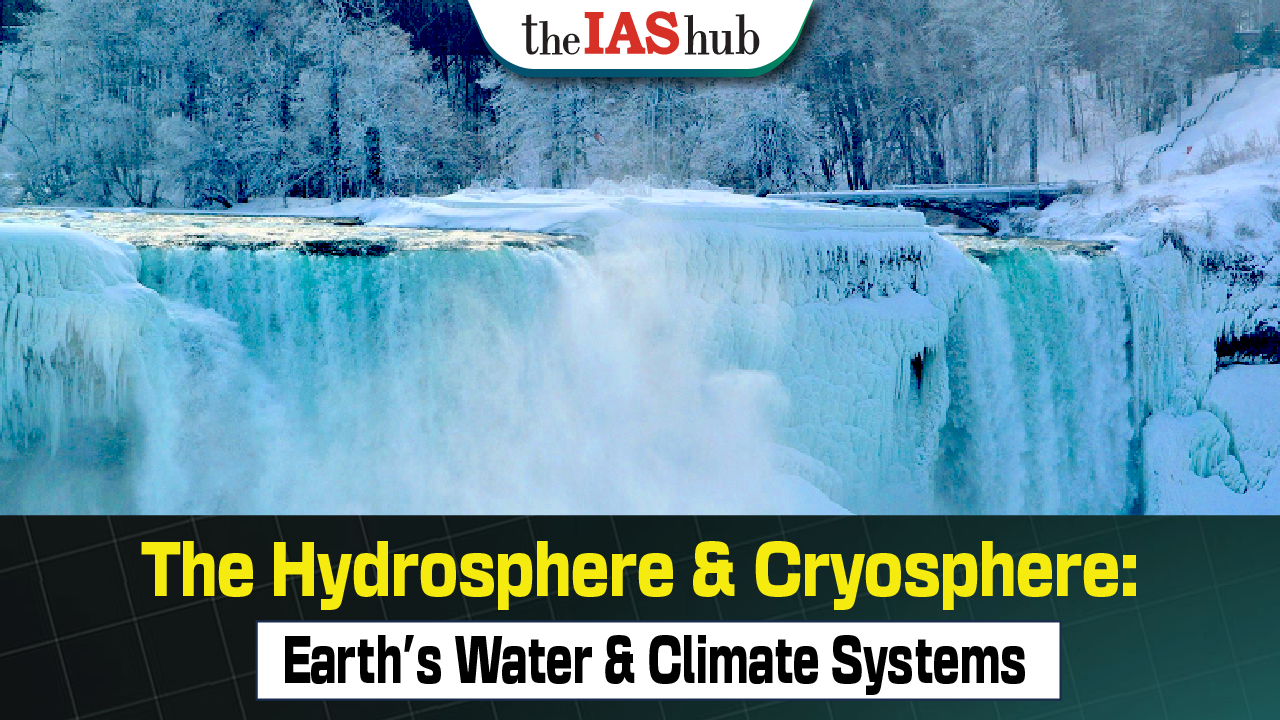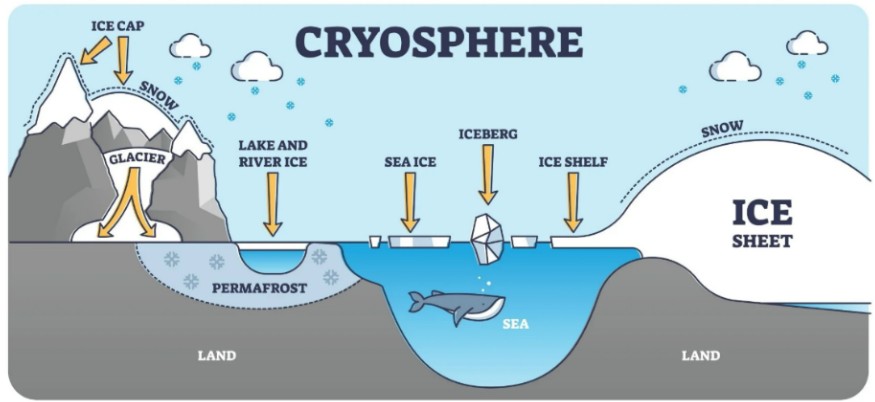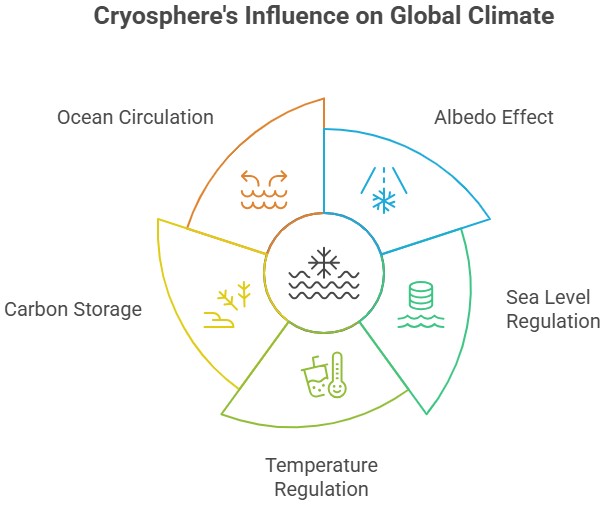Explore the hydrosphere and cryosphere, Earth’s water reservoirs including oceans, glaciers, and ice caps. Learn how they regulate climate, sustain life, and influence the global water cycle and climate change impacts.


The hydrosphere encompasses all of Earth’s water in oceans, lakes, rivers, ice, and vapor, covering about 70% of the planet’s surface. The cryosphere, its frozen part, plays a crucial role in regulating climate and storing freshwater.
The vast majority of water in the hydrosphere is found in the oceans, which hold about 97.5% of all Earth's water. The remaining 2.5% is freshwater, found in glaciers, ice caps, groundwater, lakes, rivers, and the atmosphere.

The hydrological or water cycle is a circular system that describes how water evaporates from the surface of the earth, rises into the atmosphere, cools and condenses into clouds, and falls back to the surface as precipitation. The water that falls to Earth may evaporate again or flow into rivers and eventually into the oceans.



The cryosphere significantly impacts the global climate, and changes to it due to anthropogenic climate change can have far-reaching implications for weather patterns, sea levels, and the livability of many parts of the world. The relationships between the cryosphere, oceans, atmosphere, and biosphere underscore the complexity and interconnectivity of Earth's climate system.


Refine your answer writing skills and elevate your UPSC preparation with personalized support and expert feedback.
Fill out the form to get started with the program or any other enquiries !








Are you dreaming of becoming an IAS officer? Then, IAShub can be your best guide. It is one of the Best IAS Coaching in Delhi. Many students who want to clear the UPSC exam join IAShub for learning. The institute gives both online and offline classes. Their teachers are experienced and helpful. They easily explain every topic. Students also get notes, tests, and tips to do well in the exam.
IAShub is in Delhi and is trusted by many UPSC students. It offers coaching for every part of the UPSC exam – Prelims, Mains, and Interview. The classes are simple and easy to understand. The teachers are experts and guide students in the right way. IAShub is also known for its helpful notes, test series, and answer-writing practice. IAShub is the best coaching in Delhi and also gives UPSC Online Classes. This helps students from any place in India to learn. The online classes are live and also recorded. So, students can watch them anytime. These classes cover the full UPSC syllabus.
Here are some important services provided by IAShub:
The UPSC Civil Services Exam has three parts:
This exam is tough, but with the right guidance, it becomes easy to manage. Students must study smart and stay regular.
IAShub supports students from the beginning to the end. It gives the right books, tests, and notes. The classes are easy to follow, and the teachers are always ready to help. Students get personal doubt sessions too. The test series and answer checking help students learn where they need to do better. Also, free study materials save time and money.
IAShub also guides students during the final stage – the interview. Experts take mock interviews and give useful tips. This full support makes IAShub one of the best IAS coaching in Delhi.